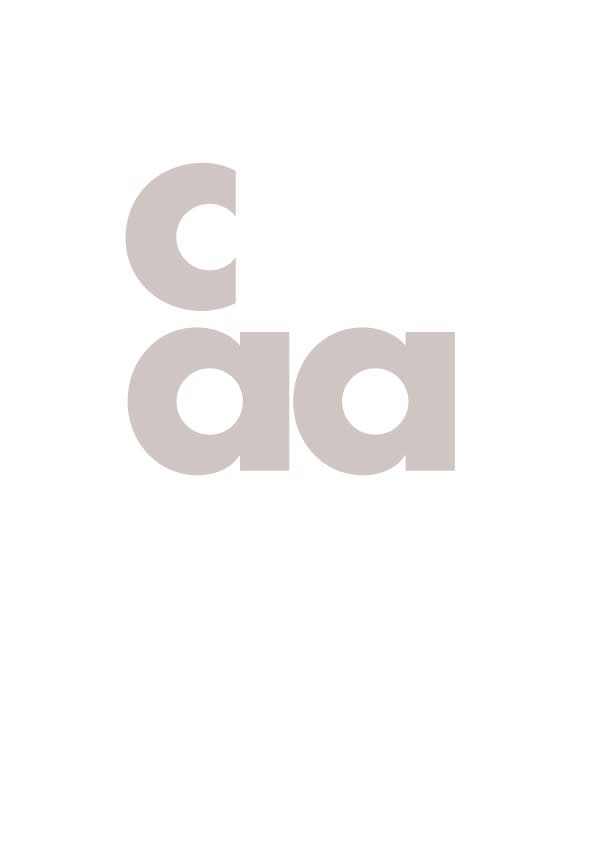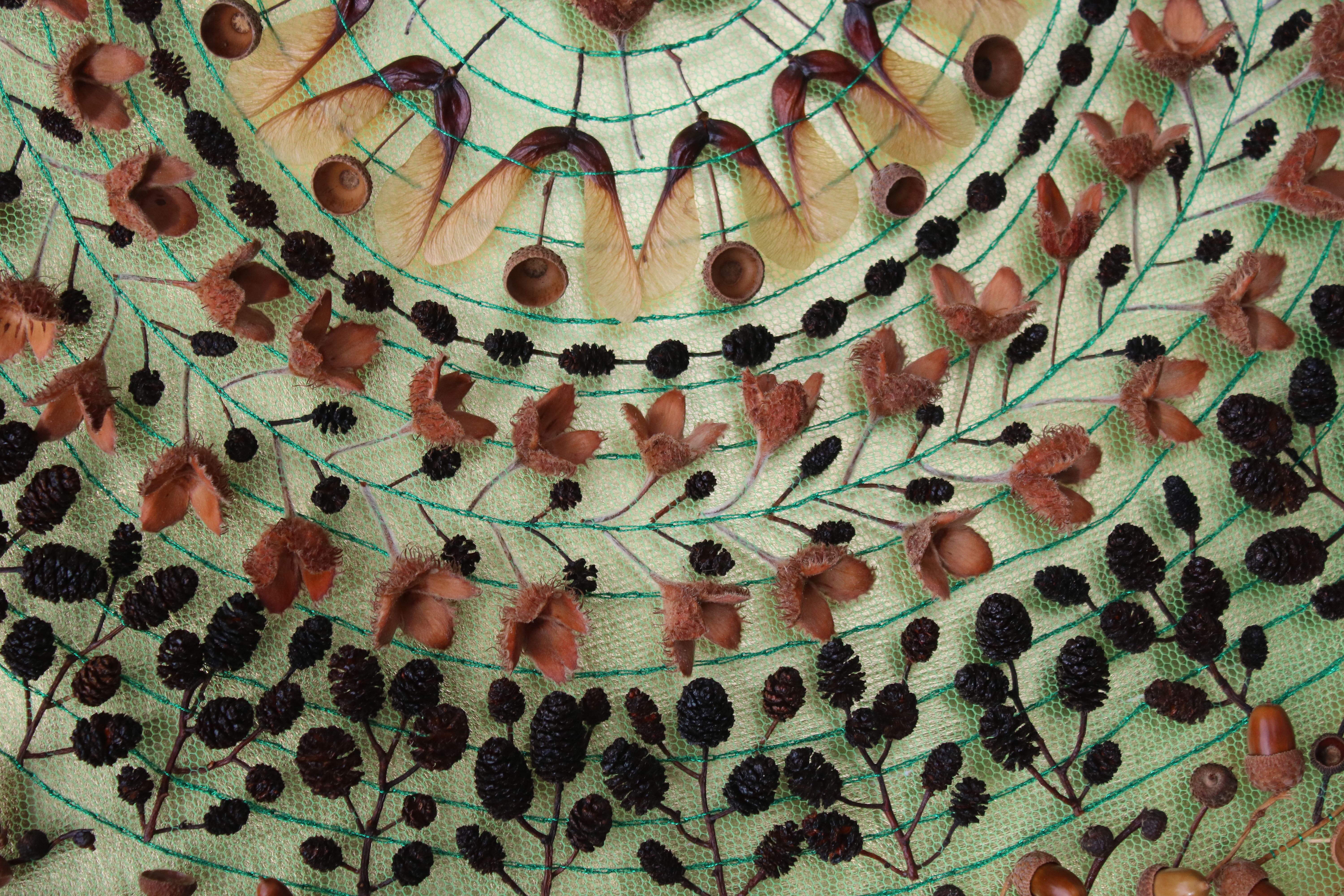Using materials as a conduit for exploring personal connections to place, history and myth, Mythological presents five artists stitching, moulding and collaging memories into shape.
Olga Prinku's Ode to Trees melds her Moldovan heritage with the ancient woodland of the United Kingdom, using her signature floral embroidery technique to create a hypnotic geometric motif which recalls the folk patterns of traditional Moldovan rugs. The foraged seeds of four British trees - oak, maple, alder and beech - are stitched into the tulle to depict the rings of a tree, its signs of age recreated in the seeds from which new trees can grow. A joyous call to celebrate nature, Olga's work asks us to consider how the old can also contain the genesis of the new.
Hanna Salomonsson's new series also bears traces of ancient landscapes, with details moulded from found objects in Småland, the region in southern Sweden where she grew up. The sublime, untamed landscape of Småland has inspired an unparalleled oral story telling tradition and these myths are reimagined in a series of sculptures which draw on the links between folklore and the natural landscape. Nerikomi patterns echo the marbling found in granite boulders, ageing timbers and other details throughout the landscape central to the legends of trolls, changelings and enchanted trees which have haunted people's imaginations for generations.
Surface and material is the catalyst for Ania Perkowska's practice as a ceramicist. An integral part of human civilisations for millenia, hints of our past can be found in the repeated forms and motifs of ceramics vessels throughout history. Drawing on this collective creative memory as well as her recollections of growing up amongst the stark concrete architecture of communist Poland, Ania's vessels are shaped by the knowledge that materials are deeply intertwined with personal and cultural histories.
Generational memories of Poland are a cornerstone in the ceramics of Tessa Wolfe Murray, whose mother arrived from Poland to Britain as a refugee in 1942 and instilled in her a sense of herself as a European, with an openness and curiosity towards the world. Smokefiring gives her a vessels a sublime depth, with sculptural shapes inspired by artefacts from ethnographic museums meeting the rocky surfaces of landscapes encountered while travelling.
The transformative power of making to remember and express the inner experience of displacement runs through Ariella Green's varied and colourful practice, which spans from mixed media collage and textiles to painting. Growing up in a kibbutz nestled in the mountains of northern Israel, she was confronted from early on with the duality of life after conflict: the trauma of immigrants' stories of displacement and the beauty of the mountains, sea and sky. Light and dark coexist: the anxiety of exile, which lives in the inky blackness and mystical prowling wolves, mingles with the reassurance of community, of blue sky, free-wheeling birds and healing. Memories of the mending of garments in the kibbutz sewing room are illuminated in Ariella's use of collage, in which fragments are engaged in a joyful dance with one another.
Forever I am in a search to find harmony in conflict: above all, dancing for life against an apprehension of fear, dancing and connecting against the dark.









